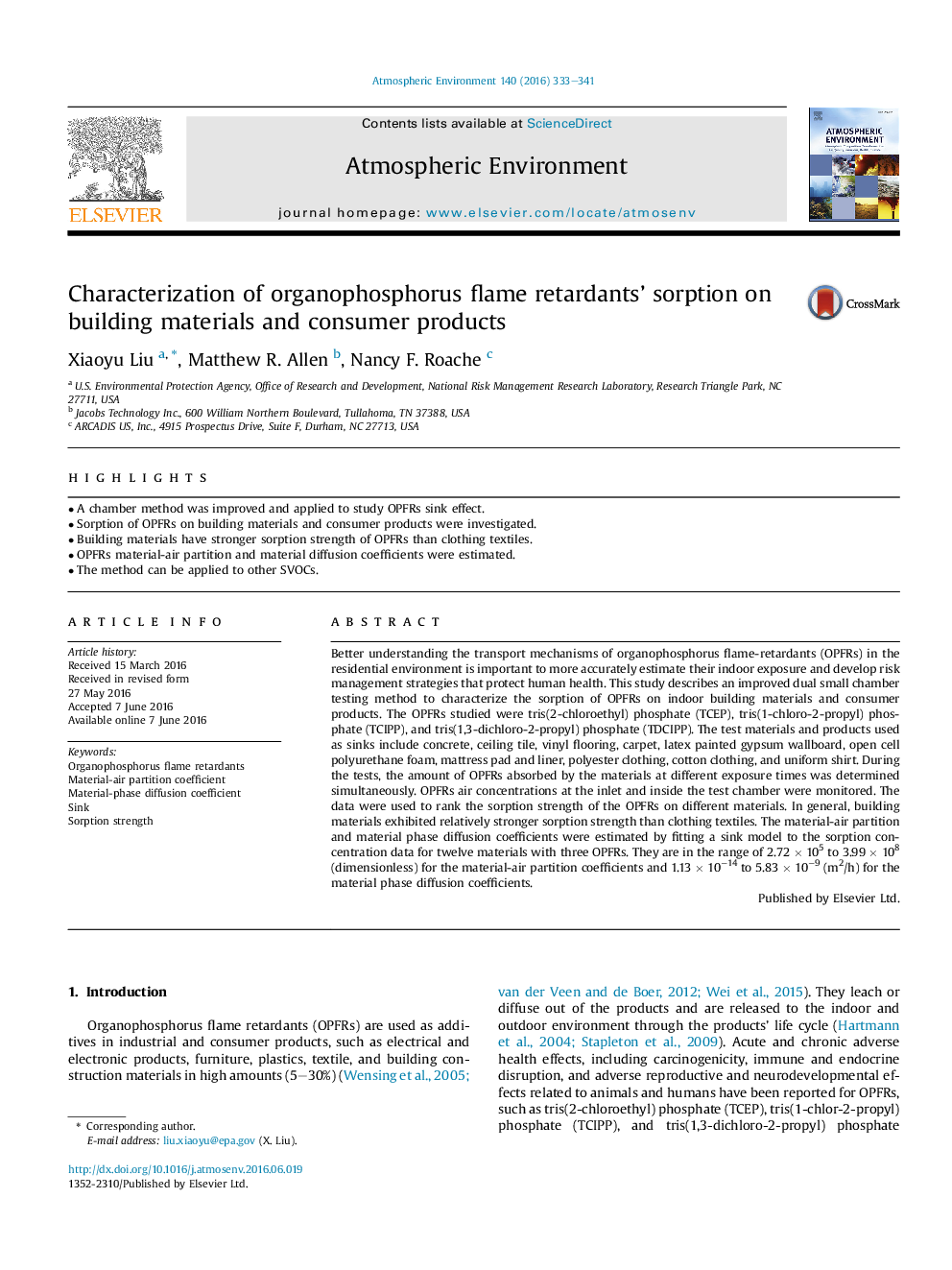| Article ID | Journal | Published Year | Pages | File Type |
|---|---|---|---|---|
| 6336195 | Atmospheric Environment | 2016 | 9 Pages |
Abstract
Better understanding the transport mechanisms of organophosphorus flame-retardants (OPFRs) in the residential environment is important to more accurately estimate their indoor exposure and develop risk management strategies that protect human health. This study describes an improved dual small chamber testing method to characterize the sorption of OPFRs on indoor building materials and consumer products. The OPFRs studied were tris(2-chloroethyl) phosphate (TCEP), tris(1-chloro-2-propyl) phosphate (TCIPP), and tris(1,3-dichloro-2-propyl) phosphate (TDCIPP). The test materials and products used as sinks include concrete, ceiling tile, vinyl flooring, carpet, latex painted gypsum wallboard, open cell polyurethane foam, mattress pad and liner, polyester clothing, cotton clothing, and uniform shirt. During the tests, the amount of OPFRs absorbed by the materials at different exposure times was determined simultaneously. OPFRs air concentrations at the inlet and inside the test chamber were monitored. The data were used to rank the sorption strength of the OPFRs on different materials. In general, building materials exhibited relatively stronger sorption strength than clothing textiles. The material-air partition and material phase diffusion coefficients were estimated by fitting a sink model to the sorption concentration data for twelve materials with three OPFRs. They are in the range of 2.72Â ÃÂ 105 to 3.99Â ÃÂ 108 (dimensionless) for the material-air partition coefficients and 1.13Â ÃÂ 10â14 to 5.83Â ÃÂ 10â9 (m2/h) for the material phase diffusion coefficients.
Related Topics
Physical Sciences and Engineering
Earth and Planetary Sciences
Atmospheric Science
Authors
Xiaoyu Liu, Matthew R. Allen, Nancy F. Roache,
